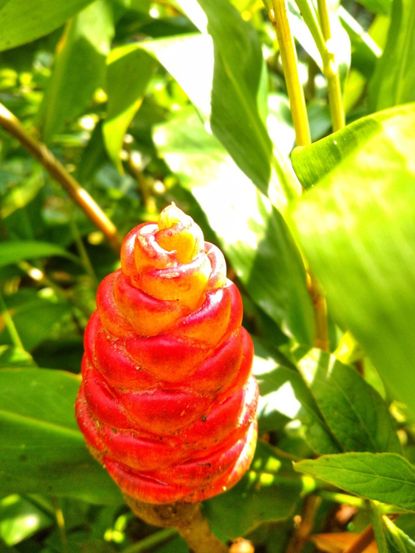Turmeric Care - How To Grow Turmeric In The Home Or Garden


Curcuma longa is a sterile triploid organism that has evolved through natural selection and propagation. A relative of ginger and sharing similar growing conditions, it is a hybrid of the wild turmeric found in southern Asia, with India being the predominant producer of growing turmeric plants for trade. Turmeric can also be found in China (where it has been cultivated since the seventh century), Jamaica, Indonesia, and Malaysia. Let's learn more about this plant, its benefits, and how to grow turmeric in the home or garden.
What Does the Turmeric Plant Look Like?
Turmeric plants grow to 3 feet (about 1 m.) high with large, 5 inch (13 cm.) deep green leaves. The blooms are green and white edged with vibrant pink and yellow.
Turmeric Benefits
Growing turmeric plants are great sources of vitamin C, magnesium, and potassium but the list of turmeric benefits doesn't stop there. With the cultivation of turmeric dating from 300 B.C. by the Harappan civilization, turmeric has been long found to have a plethora of medicinal benefits. Arthritis, muscle sprains, swelling, and pain caused by injury or surgical incision has been shown to be relieved. Stomach and liver ailments, skin diseases, and some heart related diseases can all be aided with the use of turmeric plants. It can be utilized as a blood purifier, anti-inflammatory, and antioxidant too. Growing turmeric and using the Curcumin from the plants may aid in the battle against certain types of cancer, including leukemia. Further studies have shown that turmeric plants may also be beneficial to those afflicted with Alzheimer's disease. In China, the plants have been used as a treatment for depression. There are additional turmeric benefits to one's daily life such as its use in cosmetics or sunscreen, as a home remedy for sunburn, as a dye for the body or cloth, and even as a depilatory for Indian women. It is widely reputed to aid in digestion and for this reason is a major ingredient in Indian cuisine, including curry. Turmeric is also the ingredient which lends its brilliant yellow color to mustards.
Can You Grow Turmeric?
Can you grow turmeric? Sure, although turmeric plants are really better suited to open fields with a climate that is not easily found in North America. That said, with the correct conditions, I would give it a go. A hardy ginger, growing turmeric plants require certain conditions such as humid warm weather and significant rain. When growing these plants in the home or garden temperatures between 68 to 86 degrees F. (20-30 C.) are required.
How to Grow Turmeric?
These hardy ginger relatives die back in the winter and pop back up in the spring, growing from a system of rhizomes and propagating via vegetative reproduction. This means that each piece of rhizome has the capacity to become a new plant, provided each division has a piece of the crown. You can start growing turmeric this way with a small piece of rhizome gifted to you from another gardener or purchased from a nursery. Either way, you will soon have a forest of turmeric plants as they grow and spread rapidly. When one is growing turmeric, choose a morning sun exposure with afternoon part shade and moist clay to part clay soil. Planting takes place in the spring. Plant the section 4 inches deep (10 cm.), unless container gardening in which case 1 to 2 inches (2.5-5 cm.) may be sufficient. Maintain adequate moisture and dig the roots up in late fall or early winter when the plant is dormant. Remember, these plants may be injured if temperatures fall below 50 degrees F (10 C.).
Gardening tips, videos, info and more delivered right to your inbox!
Sign up for the Gardening Know How newsletter today and receive a free download of our most popular eBook "How to Grow Delicious Tomatoes."

Amy Grant has been gardening for 30 years and writing for 15. A professional chef and caterer, Amy's area of expertise is culinary gardening.
-
 Urban Composting Guide: How To Compost In The Middle Of The City
Urban Composting Guide: How To Compost In The Middle Of The CityUrban composting does not have to be daunting. You can compost in the city, and maybe even try some urban worm composting!
By Mary Ellen Ellis
-
 Shrub Diseases And Pests To Watch Out For
Shrub Diseases And Pests To Watch Out ForShrub diseases and pests can be challenging. Learn how to recognize and eradicate them before they can present a danger to your plants.
By Susan Albert
